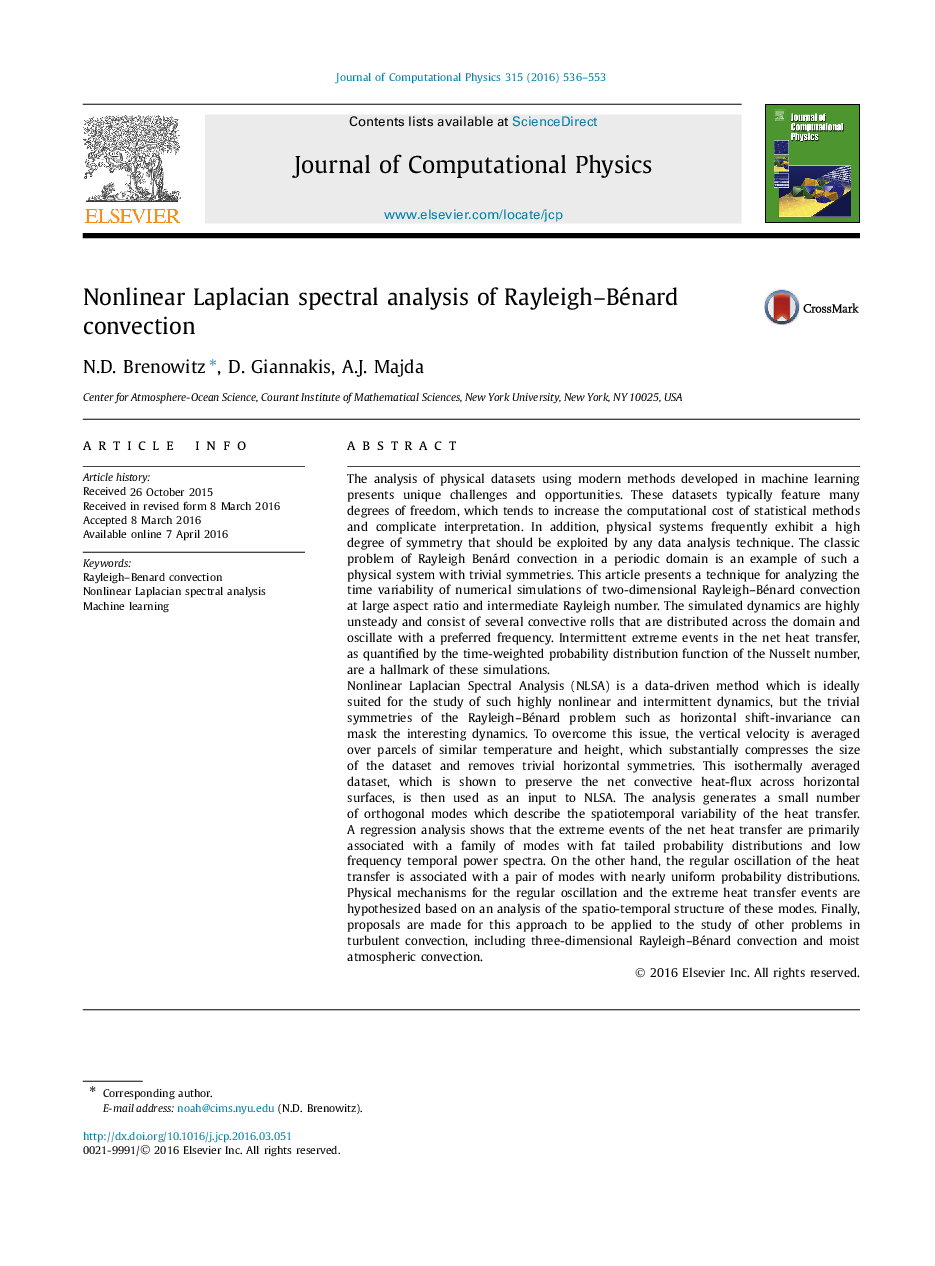| Article ID | Journal | Published Year | Pages | File Type |
|---|---|---|---|---|
| 6930244 | Journal of Computational Physics | 2016 | 18 Pages |
Abstract
Nonlinear Laplacian Spectral Analysis (NLSA) is a data-driven method which is ideally suited for the study of such highly nonlinear and intermittent dynamics, but the trivial symmetries of the Rayleigh-Bénard problem such as horizontal shift-invariance can mask the interesting dynamics. To overcome this issue, the vertical velocity is averaged over parcels of similar temperature and height, which substantially compresses the size of the dataset and removes trivial horizontal symmetries. This isothermally averaged dataset, which is shown to preserve the net convective heat-flux across horizontal surfaces, is then used as an input to NLSA. The analysis generates a small number of orthogonal modes which describe the spatiotemporal variability of the heat transfer. A regression analysis shows that the extreme events of the net heat transfer are primarily associated with a family of modes with fat tailed probability distributions and low frequency temporal power spectra. On the other hand, the regular oscillation of the heat transfer is associated with a pair of modes with nearly uniform probability distributions. Physical mechanisms for the regular oscillation and the extreme heat transfer events are hypothesized based on an analysis of the spatio-temporal structure of these modes. Finally, proposals are made for this approach to be applied to the study of other problems in turbulent convection, including three-dimensional Rayleigh-Bénard convection and moist atmospheric convection.
Related Topics
Physical Sciences and Engineering
Computer Science
Computer Science Applications
Authors
N.D. Brenowitz, D. Giannakis, A.J. Majda,
